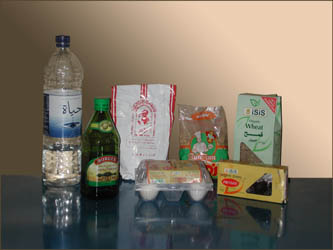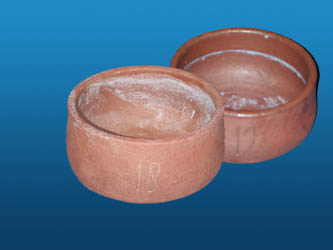|
|
|||
| The 'round robin' experiment | |||
|
In November
2003,
twenty-five new, unglazed ceramic vessels (tagen) were
purchased in Luxor (Egypt). The same number of fresh and processed food stuffs
were bought in Cairo. Among these were wheat, eggs, veal and fava beans but
also dates, coffee, sorghum and goat milk.
About 200 g. of each was put in its own tagen, covered with mineral
water and allowed to sit for 24 hours.
|
 |
|
A number
identifying the contents had been engraved on the outside of each
vessel and all were wrapped in aluminum foil to prevent leakage and
contamination. The next day, the vessels and their contents were put in
an oven and boiled for about one hour. After they had cooled down,
water was added where necessary and all vessels were cooked for another
hour.
|
 |
|
The vessels
were left untouched for another 24 hours. They were then unwrapped,
cleaned with cold water and stored. In January 2004, all vessels except
one were crushed to enable the analysis of the organic residue and
comparison with those found in ancient vessels. The last whole tagen was machine-cut into twelve
pieces in May 2004.
|

|
|
These were
distributed among several laboratories. The purpose of this exercise is
not to find the residue in the sherd but to learn how the same
(simulated) artifact can be approached, what the results of such an
approach might be and to provide fuel for the discussion about
archaeological residue analysis that will take place in Salt Lake City,
in April 2005.
|

|
|
Your suggestions, additions, comments
and corrections are welcome and your participation even more so.
|
|
|
|||
| Mobile
People |
Ancient
Apprenticeship |
Eastern
Desert Ware |
Cotsen
Institute |